| Slovakia’s War:
Scenario Preview, Part Two
By Mike Bennighof, Ph.D.
July 2019
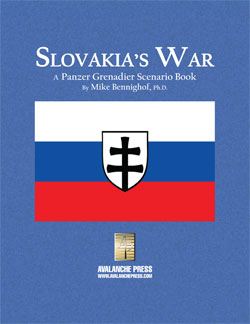 I’m pretty sure no one has ever published a game, or game expansion, based on the Slovakian Army’s operations in World War II. Panzer Grenadier: Slovakia’s War, a heavily revised version of our old, out-of-print First Axis book, is unique. We can probably say similar things about a number of other books and games we’ve published here. I’m pretty sure no one has ever published a game, or game expansion, based on the Slovakian Army’s operations in World War II. Panzer Grenadier: Slovakia’s War, a heavily revised version of our old, out-of-print First Axis book, is unique. We can probably say similar things about a number of other books and games we’ve published here.
The Slovak Army simply wasn’t very good, and for most of the war they fought on the wrong side. Though better-supplied with weapons and equipment compared to the other Eastern European Axis armies thanks to leftover stocks of Czech tanks, artillery and vehicles, anti-Slovak prejudice in the old Czechoslovakia left them with a severe shortage of trained officers. Both the officer corps and the rank and file showed a decided lack of enthusiasm for the Axis cause.
In our last segment, we looked at scenarios showing the Slovak Army at its peak, such as it was. In these next five, they’re even worse.
Scenario Nine
Crimean Gateway
28 October 1943
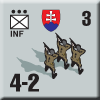 Reorganized, more or less, as an infantry division, the Slovaks spent the spring and summer of 1943 behind the German lines. That changed when the Soviets opened a powerful offensive in southern Ukraine that fall, and the Slovaks were rushed to hold the Molochna River north of Melitopol. Known as the “gateway to the Crimea,” the city and its vital rail lines had to be held or the entire peninsula would fall to the Red Army. Reorganized, more or less, as an infantry division, the Slovaks spent the spring and summer of 1943 behind the German lines. That changed when the Soviets opened a powerful offensive in southern Ukraine that fall, and the Slovaks were rushed to hold the Molochna River north of Melitopol. Known as the “gateway to the Crimea,” the city and its vital rail lines had to be held or the entire peninsula would fall to the Red Army.
Conclusion
Flung into the line as a last reserve, the Slovaks stood up poorly. The division went into battle with a ration strength of less than 8,000; on top of casualties suffered, at least 2,000 of them deserted to the Soviets during the course of the battle. The Red Army sliced through the Slovak defenders and quickly moved forward to the Dnepr River, where the front stabilized for many months.
Notes
The Slovaks have gotten even worse at this whole war-fighting thing, while the Soviets are much better and have numbers and firepower on their side. The Slovaks are holding a river line but this time they don’t have their mass of trucks to move the defenders about. They do have a single 88mm battery, and they’re going to need it pretty badly.
Scenario Ten
Isthmus Guard
8 April 1944
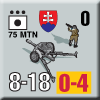 Most survivors of the Mobile Division turned in their weapons in early 1944 and the unit was assigned construction work well behind the front lines. A handful of the most determined soldiers remained under arms in the Tartarko Combat Group, assigned to help defend the Perekop Isthmus leading from Ukraine to the Crimean Peninsula. The small unit was well-supplied with light anti-aircraft guns, but almost nothing else. Most survivors of the Mobile Division turned in their weapons in early 1944 and the unit was assigned construction work well behind the front lines. A handful of the most determined soldiers remained under arms in the Tartarko Combat Group, assigned to help defend the Perekop Isthmus leading from Ukraine to the Crimean Peninsula. The small unit was well-supplied with light anti-aircraft guns, but almost nothing else.
Conclusion
The ill-prepared Slovaks put up some resistance, but the Soviets soon breached the earthen embankment and rolled up both Slovak flanks. No survivors made it back to German lines, and about 300 of the combat group’s 775 men defected and joined the Red Army on the spot. The remainder were killed or taken prisoner.
Notes
We’ve fought for the Turkish Ditch before, in the old Eastern Front game, but the Soviet defenders then were far better prepared than the Slovaks, who would rather be somewhere else. Even so, they have a single powerful artillery battery supporting them and they do have the Turkish Ditch to hide behind, so the Soviets are going to have to drive them off the ditch.
Scenario Eleven
Capturing Lojev
8 November 1942
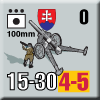 Though supposedly given lighter duty than the Mobile Division, the Slovak Security Division still saw plenty of combat well behind the lines. The Soviet partisan movement was strong in Western Ukraine, and made stronger by the fact that the Security Division had been given most of the Slovak Army's politically suspect officers. When a strong detachment of partisans overran a German police outpost in Lojev, the division’s recon group moved to relieve them with less enthusiasm than the division command expected. Though supposedly given lighter duty than the Mobile Division, the Slovak Security Division still saw plenty of combat well behind the lines. The Soviet partisan movement was strong in Western Ukraine, and made stronger by the fact that the Security Division had been given most of the Slovak Army's politically suspect officers. When a strong detachment of partisans overran a German police outpost in Lojev, the division’s recon group moved to relieve them with less enthusiasm than the division command expected.
Conclusion
Ambushed outside of town, the Slovak divisional recon group fell back under heavy mortar fire. They attempted to flush the partisans from the woods and continue their advance, but lost heart when anti-tank rifle fire destroyed two of their accompanying armored cars. Chastened and defeated, the Slovaks broke off their attack. By the next summer, all of the recon group’s officers would either have been dismissed or deserted to join the partisans.
Notes
A small Slovak combat group probes forward, knowing that Partisan ambushes lurk ahead. Their morale isn’t too bad (this is the divisional recon group, boasting the unit’s most motivated soldiers and officers). As an ambush scenario it has more than its share of special rules, but it’s not a very large one so that sort of balances out.
Scenario Twelve
Defending Lojev
14 November 1942
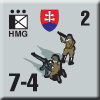 Having captured the town of Lojev, the partisans only held it for a few days before melting back into the forests. The Slovaks moved in once they were gone, but would not be left in peace. Backed by hardened cadres and heavy weapons, the partisans returned to the attack. Having captured the town of Lojev, the partisans only held it for a few days before melting back into the forests. The Slovaks moved in once they were gone, but would not be left in peace. Backed by hardened cadres and heavy weapons, the partisans returned to the attack.
Conclusion
The partisans subjected the battered town to several assaults, prompting the Slovaks to call for German reinforcements. Though the partisans could not make a serious lodgment in Lojev this time, they did ambush the Germans and inflict serious casualties on them. The Slovaks claimed to have killed over 50 partisans for the loss of but three of their own, though these figures are hard to substantiate.
Notes
A tiny Slovak garrison holds the fort against waves of angry Partisans, who are backed by tough NKVD cadres wielding machine guns and mortars and even tougher NKVD commandos. On the plus side, the Slovaks do get reinforced by a company of SS men who are even more inept then they, so maybe that doesn’t belong on the plus side.
Scenario Thirteen
Korbela’s Tank
15 May 1943
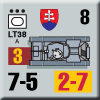 Exposure to German anti-Slavic racism turned most Slovak officers into staunch anti-fascists, with the exception of Rudolf Pilfousek who became an ardent Nazi. When Pilfousek was named commander of the Slovak Security Division, his officers and troops began slipping away to join the partisans they were supposed to be fighting. One of them, a tank driver named Corporal Korbela, was determined to bring a substantial asset along with him. Exposure to German anti-Slavic racism turned most Slovak officers into staunch anti-fascists, with the exception of Rudolf Pilfousek who became an ardent Nazi. When Pilfousek was named commander of the Slovak Security Division, his officers and troops began slipping away to join the partisans they were supposed to be fighting. One of them, a tank driver named Corporal Korbela, was determined to bring a substantial asset along with him.
Conclusion
Korbela waited for what seemed to be an opportune moment, and headed away from the rest of his unit towards the partisans. But his tank became stuck in the river bottom mud, and despite the eager help of the partisans he and the rest of his anti-fascist crew could not break it loose. When loyal tanks caught up and opened fire Korbela’s crew and the partisans removed the tank’s machine guns and fled into the woods where over 1,000 Slovak soldiers had already joined the movement.
Notes
This is one of the stranger scenarios in the 1,000-plus of the Panzer Grenadier oeuvre. The Slovaks have tank support as they battle the Partisans, but at some point in the battle one of those tank units will try to switch sides. That requires a great many special rules, so the scenario isn’t for everyone, but the weirdness is its own reward.
And that’s it for the dregs of the Slovak Army. Next time, the Slovak Army as a whole changes sides and fights against the Nazis. Punching a Nazi is always a good thing.
Send the Slovaks into battle! Click here to order Slovakia’s War.
Sign up for our newsletter right here. Your info will never be sold or transferred; we'll just use it to update you on new games and new offers.
Mike Bennighof is president of Avalanche Press and holds a doctorate in history from Emory University. A Fulbright Scholar and award-winning journalist, he has published over 100 books, games and articles on historical subjects.
He lives in Birmingham, Alabama with his wife, three children and his dog, Leopold.
|
